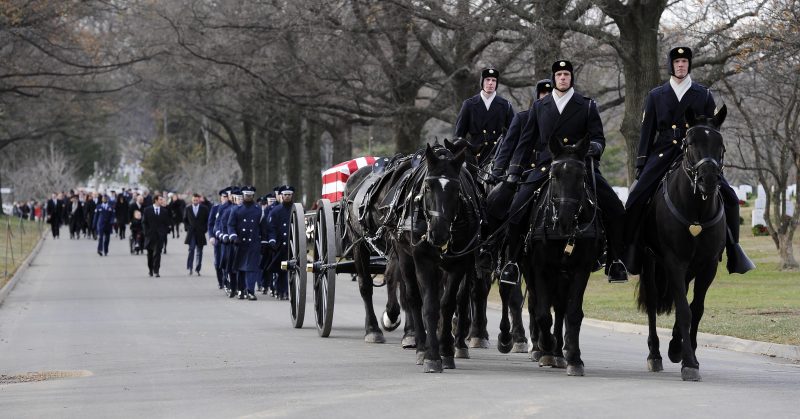Air Force Major Troy Gilbert lies in Section 60 of the Arlington National Cemetery. In a place where every headstone represents a unique story, Gilbert’s tale of how he came to lie here is more unusual than most. It’s one that almost ended with him lying somewhere in Iraq and not back home in the US.
Ten years after he was killed in combat, Gilbert’s remains were laid to rest with full military honors on December 19. It was the third time he’d been buried since 2006. This time remains that were recovered in 2006 and 2012 were reunited with remains recovered this year. The ceremony was attended by Gilbert’s family and over 300 friends, colleagues and wingmen. A memorial service preceded the burial and included music from Lee Brice and Jerrod Niemann and guests which included Secretary of the Air Force Deborah Lee James, Air Force Global Strike Command commander General Robin Rand, US Representative William “Mac” Thornberry, R-Texas, along with actor Gary Sinise.
Gilbert was flying in direct support of coalition ground combat operations on November 27, 2006, when his F-16C Fighting Falcon crashed about 20 miles northwest of Baghdad. He was given the Distinguished Flying Cross with valor posthumously for saving the lives of US troops and allies who were under attack from Al Qaeda at the time. Insurgents reached the site of the crash before the allies could fight their way to it. The insurgents took the body, which led to ten years of waiting for his family before he would come home.
Gilbert was survived by his mother, Kaye Gilbert; his father, retired Senior Master Sergeant Ron Gilbert; his sister, Rhonda Jimmerson; his wife, Ginger Gilbert Ravella; his sons, Boston and Greyson; and his daughters, Isabella, Aspen and Annalise.
US troops were able to recover DNA which identified Gilbert after the crash. A funeral with full military honors was held at Arlington National Cemetery on December 11, 2006. In September 2012, more remains were recovered. They were interred during a service on December 11, 2013.
A tribal leader in Iraq approached a US military adviser near al Taqaddam on August 28, 2016. He provided apparent evidence of the remains of a US pilot who crashed during Operation Iraqi Freedom. The leader said his tribe had the remains and the flight gear of the pilot.
The leader gave the evidence to the adviser who passed it along to experts who tested it at the Armed Forces Medical Examiner System at the Dover Air Force Base in Delaware. AFMES confirmed that the evidence was Gilbert’s by DNA testing.
US military leaders then contacted the tribal leader who handed over the remains and the flight suit, flight jacket and parachute harness of the pilot.
Gilbert’s remains arrived at Dover on October 3rd. They were tested to confirm Gilbert’s identity on October 4th. Dental records and DNA testing were used to make the confirmation that Gilbert had fully returned to the US ten years after he died, U.S. Air Force reported.
The third internment of Gilbert has provided a sense of closure for his family. His parents expressed their gratitude to all who continued searching for their son for ten years. His wife also stated her appreciation that the Air Force fulfilled its promise to leave no airman behind.
